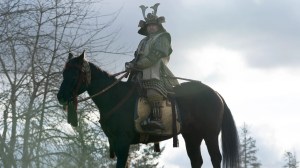The use of artificial intelligence is one of the hottest topics in Hollywood, and one of the major points of contention between two striking industry unions and the Alliance of Motion Picture and Television Producers. Even though many members of the WGA and SAG-AFTRA are hoping to avoid the use of AI altogether, new reports suggest studios may do what they can to skirt the ruling.
Videos by ComicBook.com
According to a new piece by THR, the AMPTP believes that if a human touches the AI-generated script—no matter how little involvement there actually is—they should be able to copyright the material. “If a human touches material created by generative AI, then the typical copyright protections will kick in,” an AMPTP told the trade.
Why isn’t AI copyrightable?
Giving AI-powered systems use the work of others to train its technology, copyrighting is not available because it’s virtually impossible to track down every piece involved in the production and training of AI.
“In the absence of any human involvement in the creation of the work, the clear and straightforward answer is the one given by the Register: No,” Judge Beryl Howell wrote in her ruling earlier this month before adding copyright law currently “protects only works of human creation.”
Why is the WGA striking?
Tuesday night, the AMPTP leaked its own offer to members of the press, a tactic the WGA has since said is aimed at turning the guild’s members against each other.
“On Monday of this week, we received an invitation to meet with Bob Iger, Donna Langley, Ted Sarandos, David Zaslav and Carol Lombardini,” the latest WGA memo reads. “It was accompanied by a message that it was past time to end this strike and that the companies were finally ready to bargain for a deal. We accepted that invitation and, in good faith, met tonight, in hopes that the companies were serious about getting the industry back to work. Instead, on the 113th day of the strike – and while SAG-AFTRA is walking the picket lines by our side – we were met with a lecture about how good their single and only counteroffer was. We explained all the ways in which their counter’s limitations and loopholes and omissions failed to sufficiently protect writers from the existential threats that caused us to strike in the first place. We told them that a strike has a price, and that price is an answer to all – and not just some – of the problems they have created in the business.”
“But this wasn’t a meeting to make a deal,” the memo continues. “This was a meeting to get us to cave, which is why, not twenty minutes after we left the meeting, the AMPTP released its summary of their proposals. This was the companies’ plan from the beginning – not to bargain, but to jam us. It is their only strategy – to bet that we will turn on each other. Tomorrow we will send a more detailed description of the state of the negotiations. And we will see you all out on the picket lines and let the companies continue to see what labor power looks like.”








